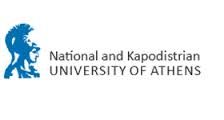Request Demo
Last update 08 May 2025
Cardiomyopathies, Secondary
Last update 08 May 2025
Basic Info
Synonyms CARDIOMYOPATHY SECONDARY, Cardiomyopathies, Secondary, Cardiomyopathy secondary + [26] |
Introduction- |
Related
1
Drugs associated with Cardiomyopathies, SecondaryTarget |
Mechanism FXN modulators [+1] |
Active Org. |
Originator Org. |
Active Indication |
Inactive Indication- |
Drug Highest PhasePhase 1/2 |
First Approval Ctry. / Loc.- |
First Approval Date20 Jan 1800 |
8
Clinical Trials associated with Cardiomyopathies, SecondaryNCT06949748
UNIFLECA Study: Prospective Cohort Study on Flecainide's Impact on Persistent High Premature Ventricular Contraction Burden and PVC-Induced Cardiomyopathy
The UNIFLECA study is a prospective, single-arm, observational cohort evaluating the efficacy, safety, and tolerability of flecainide (in the form of Sanocard) in adults with frequent idiopathic premature ventricular contractions (PVCs) and suspected PVC-induced cardiomyopathy (PVCi-CMP). Frequent PVCs-defined as a burden >5% on two separate 24-hour Holter recordings-are increasingly recognized as a cause of reversible systolic dysfunction in patients without structural heart disease.
Participants undergo a comprehensive baseline evaluation including echocardiography, occasionally cardiac MRI, and coronary angiography or equivalent testing to confirm the absence of structural abnormalities. Patients are enrolled only if they are ineligible or unwilling to undergo catheter ablation, and have no contraindications to flecainide.
Flecainide therapy is initiated at a starting dose of 100 mg/day and titrated up to 200 mg/day, guided by ECG findings, symptom response, and QRS duration. Regular follow-up occurs at three-month intervals over three years, with periodic 24-hour Holter monitoring and assessment of symptoms, LVEF, and adverse events.
The primary outcome is the reduction in PVC burden. Secondary outcomes include improvement in LVEF, symptom relief (measured by structured questionnaires), adverse effects, and long-term treatment adherence. The study aims to generate real-world data on the non-invasive management of PVCs with flecainide and explore its role as an alternative to ablation in carefully selected patients.
Participants undergo a comprehensive baseline evaluation including echocardiography, occasionally cardiac MRI, and coronary angiography or equivalent testing to confirm the absence of structural abnormalities. Patients are enrolled only if they are ineligible or unwilling to undergo catheter ablation, and have no contraindications to flecainide.
Flecainide therapy is initiated at a starting dose of 100 mg/day and titrated up to 200 mg/day, guided by ECG findings, symptom response, and QRS duration. Regular follow-up occurs at three-month intervals over three years, with periodic 24-hour Holter monitoring and assessment of symptoms, LVEF, and adverse events.
The primary outcome is the reduction in PVC burden. Secondary outcomes include improvement in LVEF, symptom relief (measured by structured questionnaires), adverse effects, and long-term treatment adherence. The study aims to generate real-world data on the non-invasive management of PVCs with flecainide and explore its role as an alternative to ablation in carefully selected patients.
Start Date26 Apr 2024 |
Sponsor / Collaborator |
NCT04654988
A Multicenter, Randomized, Double-blind, Placebo-controlled Study to Evaluate the Efficacy of Immunosuppression in Biopsy-proven Virus Negative Myocarditis or Inflammatory Cardiomyopathy
Myocarditis can result in numerous complications, but there is paucity of data regarding optimal therapy, short- and long-term effects of possibly effective immunosuppressive therapy. The IMPROVE-MC study will provide high-quality scientific data about efficacy and safety of immunosuppressive therapy, non-invasive (MRI, biomarkers) and invasive diagnostics tests (endomyocardial biopsy), and prognosis in myocarditis. The objective of this multicenter, prospective, randomized, double-blind placebo-controlled trial is to assess the efficacy and safety of 12 - month treatment with prednisone and azathioprine comparing to placebo on top of guideline-recommended medical therapy in patients with biopsy-proven virus negative myocarditis or inflammatory cardiomyopathy and reduced ejection fraction (LVEF ≤ 45%). The study will also assess persistence of the treatment effects after 12 months.
Start Date01 Dec 2022 |
Sponsor / Collaborator |
NCT05445323
A Phase 1/2 Study of the Safety and Efficacy of LX2006 Gene Therapy in Participants With Cardiomyopathy Associated With Friedreich's Ataxia
This is a Phase 1/2, open-label, dose-ascending, multicenter study of the safety and efficacy of LX2006 for participants who have Friedreich's Ataxia with evidence of cardiomyopathy. The study will evaluate up to three doses of single administration of LX2006 (AAVrh.10hFXN), an adeno-associated virus (AAV) gene therapy designed to intravenously deliver the human frataxin (hFXN) gene to cardiac cells over a 52-week period. Long-term safety and efficacy will be evaluated for an additional 4-years for a total of 5-years post LX2006 treatment.
Start Date24 Aug 2022 |
Sponsor / Collaborator |
100 Clinical Results associated with Cardiomyopathies, Secondary
Login to view more data
100 Translational Medicine associated with Cardiomyopathies, Secondary
Login to view more data
0 Patents (Medical) associated with Cardiomyopathies, Secondary
Login to view more data
200
Literatures (Medical) associated with Cardiomyopathies, Secondary01 May 2025·Pathology - Research and Practice
The role of endothelin and its receptors in cardiomyopathy: From molecular mechanisms to therapeutic insights
Review
Author: Goyal, Ahsas ; Yadav, Harlokesh Narayan ; Dubey, Nandini ; Verma, Aanchal ; Vishwakarma, Vishal ; Bhatiya, Jagriti ; Arya, Dharamvir Singh
22 Mar 2025·European Heart Journal: Acute Cardiovascular Care
Implications of a new clinical classification of acute myocardial infarction
Article
Author: Singh, Trisha ; Thurston, Alexander J F ; Dweck, Marc R ; Chapman, Andrew R ; Hung, John ; Meah, Mohammed N ; van Beek, Edwin J R ; Fujisawa, Takeshi ; Chiong, Justin ; Jenkins, William S ; Lindahl, Bertil ; Semple, Scott ; Newby, David E ; Taggart, Caelan ; Williams, Michelle C ; Mills, Nicholas L ; Bularga, Anda ; Strachan, Fiona E ; Dey, Damini ; Boeddinghaus, Jasper ; Baker, Andrew H ; Wereski, Ryan ; Daghem, Marwa ; McDermott, Michael ; Schulberg, Stacey ; Tuck, Chris ; Ferry, Amy V
01 Feb 2025·Journal of Cardiology Cases
Rescue from sudden ventricular tachycardia and fibrillation using wearable cardioverter-defibrillator in male late-onset Fabry disease patient
Article
Author: Yoshimura, Michihiro ; Kobayashi, Hiroshi ; Kobayashi, Masahisa ; Fukuro, Eiko ; Hongo, Kenichi ; Tokutake, Kenichi ; Okuyama, Toraaki
Analysis
Perform a panoramic analysis of this field.
login
or

AI Agents Built for Biopharma Breakthroughs
Accelerate discovery. Empower decisions. Transform outcomes.
Get started for free today!
Accelerate Strategic R&D decision making with Synapse, PatSnap’s AI-powered Connected Innovation Intelligence Platform Built for Life Sciences Professionals.
Start your data trial now!
Synapse data is also accessible to external entities via APIs or data packages. Empower better decisions with the latest in pharmaceutical intelligence.
Bio
Bio Sequences Search & Analysis
Sign up for free
Chemical
Chemical Structures Search & Analysis
Sign up for free



